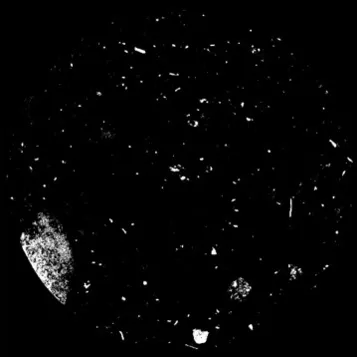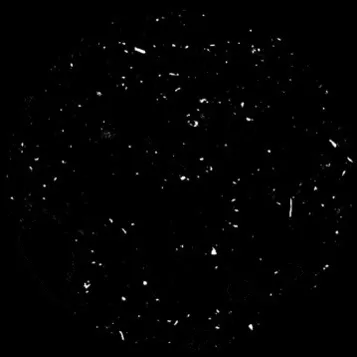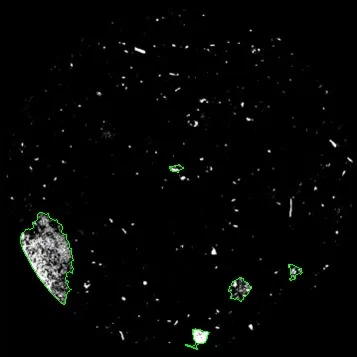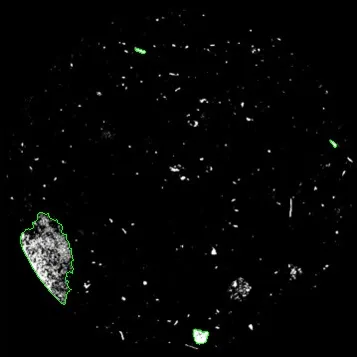我是一名初学者,正在学习使用Python进行图像处理,所以我需要帮助。我试图使用下面发布的代码从我的图片中删除连接像素区域。实际上,它可以工作,但效果不佳。我想要的是从我的图片中删除像红色标记的那些像素区域,以便获得清晰的图片。如果能够设置检测到的连接像素区域的最小和最大尺寸限制,那就更好了。
示例图片1(已标记区域)
示例图片2(已标记区域)
这是我目前的代码:
### LOAD MODULES ###
import numpy as np
import imutils
import cv2
def is_contour_bad(c): # Decide what I want to find and its features
peri=cv2.contourArea(c, True) # Find areas
approx=cv2.approxPolyDP(c, 0.3*peri, True) # Set areas approximation
return not len(approx)>2 # Threshold to decide if add an area to the mask for its removing (if>2 remove)
### DATA PROCESSING ###
image=cv2.imread("025.jpg") # Load a picture
gray=cv2.cvtColor(image, cv2.COLOR_BGR2GRAY) # Convert to grayscale
cv2.imshow("Original image", image) # Plot
edged=cv2.Canny(gray, 50, 200, 3) # Edges of areas detection
cnts=cv2.findContours(edged.copy(), cv2.RETR_LIST, cv2.CHAIN_APPROX_SIMPLE) # Find contours: a curve joining all the continuous points (along the boundary), having same color or intensity
cnts=imutils.grab_contours(cnts)
mask=np.ones(image.shape[:2], dtype="uint8")*255 # Setup the mask with white background
# Loop over the detected contours
for c in cnts:
# If the contour satisfies "is_contour_bad", draw it on the mask
if is_contour_bad(c):
cv2.drawContours(mask, [c], -1, 0, -1) # (source image, list of contours, with -1 all contours in [c] pass, 0 is the intensity, -1 the thickness)
image_cleaned=cv2.bitwise_and(image, image, mask=mask) # Remove the contours from the original image
cv2.imshow("Adopted mask", mask) # Plot
cv2.imshow("Cleaned image", image_cleaned) # Plot
cv2.imwrite("cleaned_025.jpg", image_cleaned) # Write in a file



